
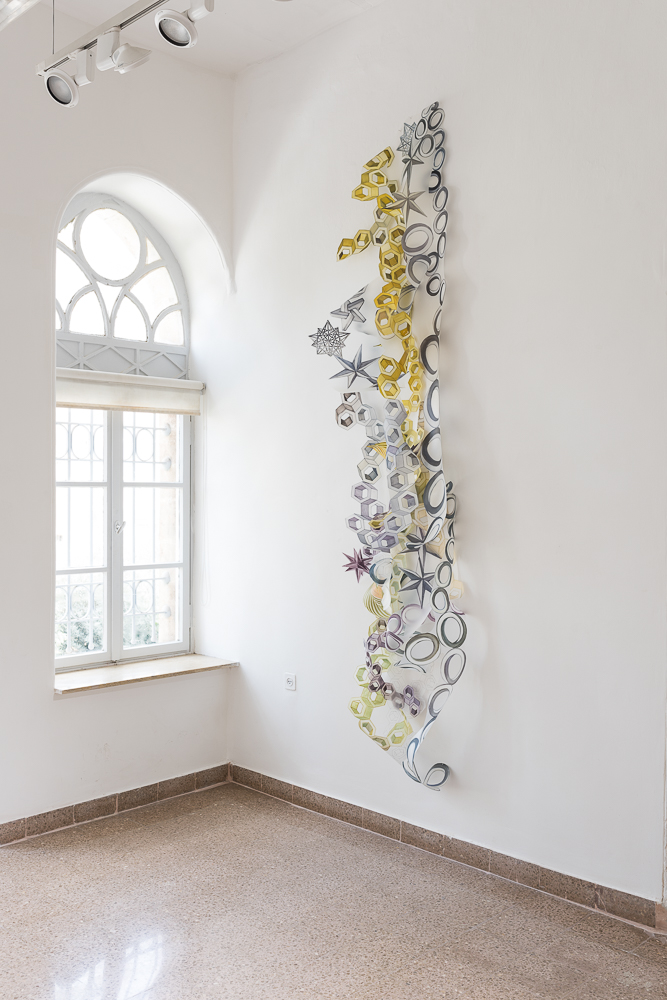

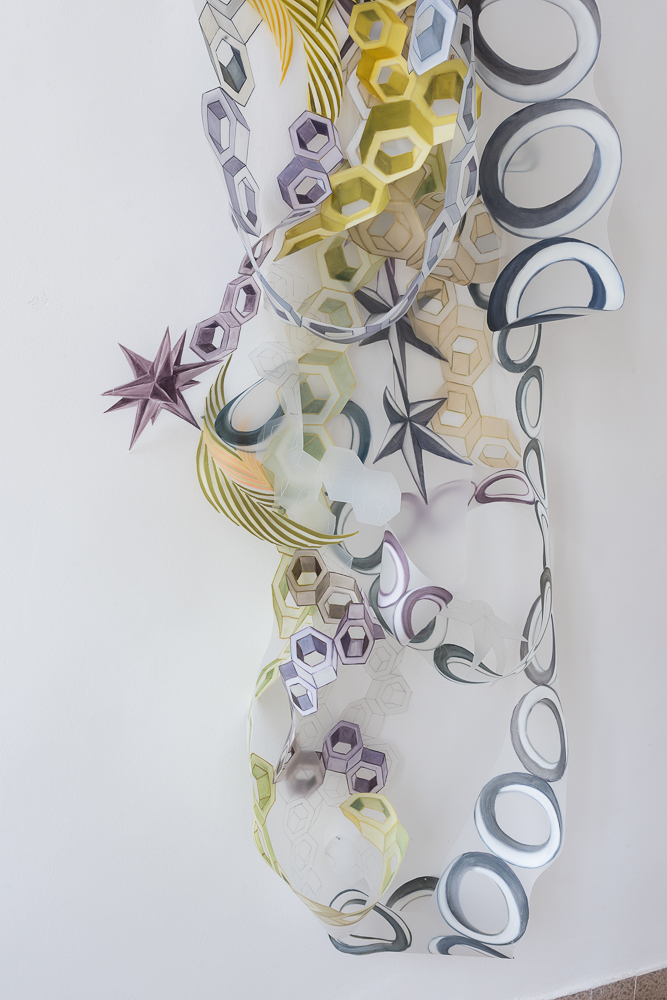
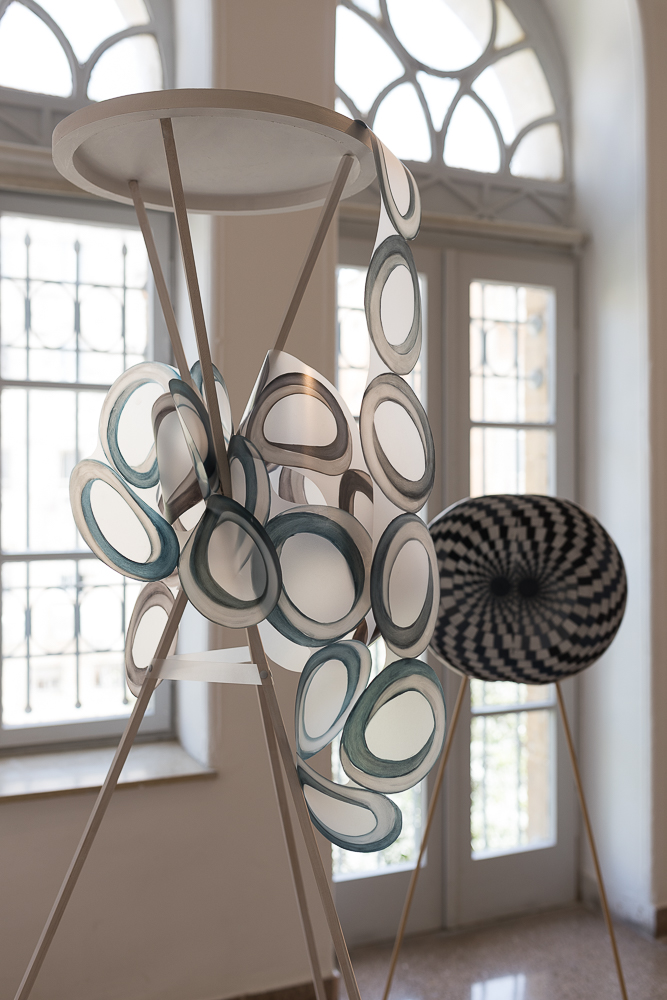


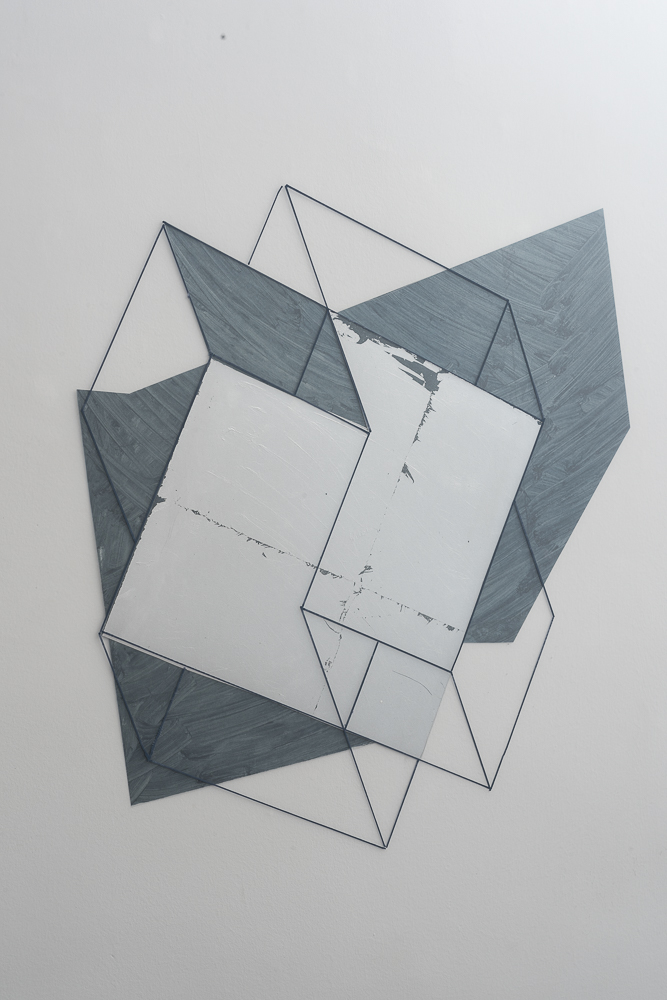

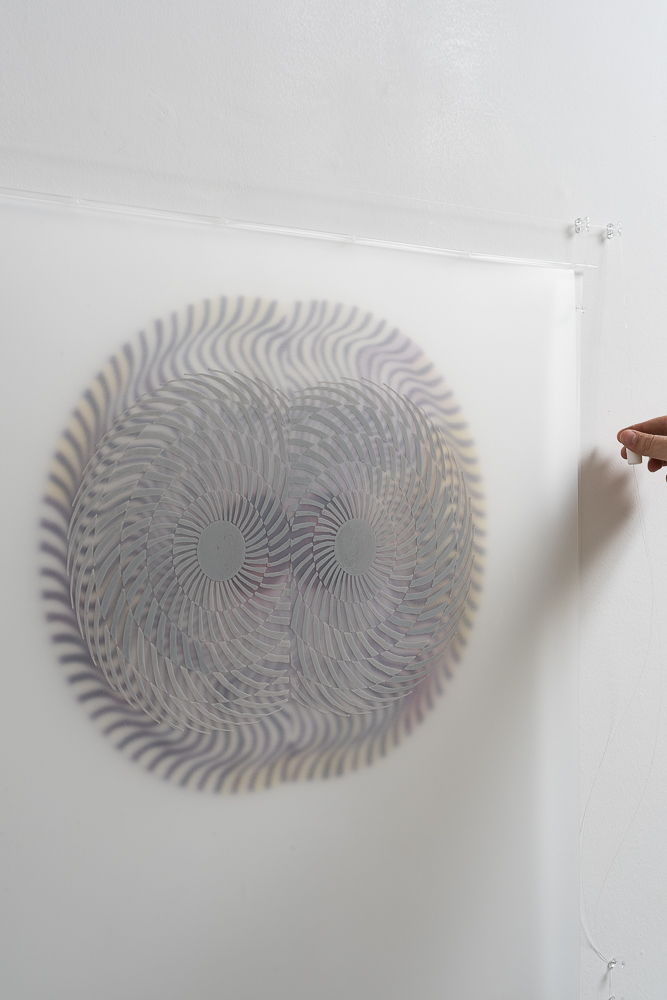
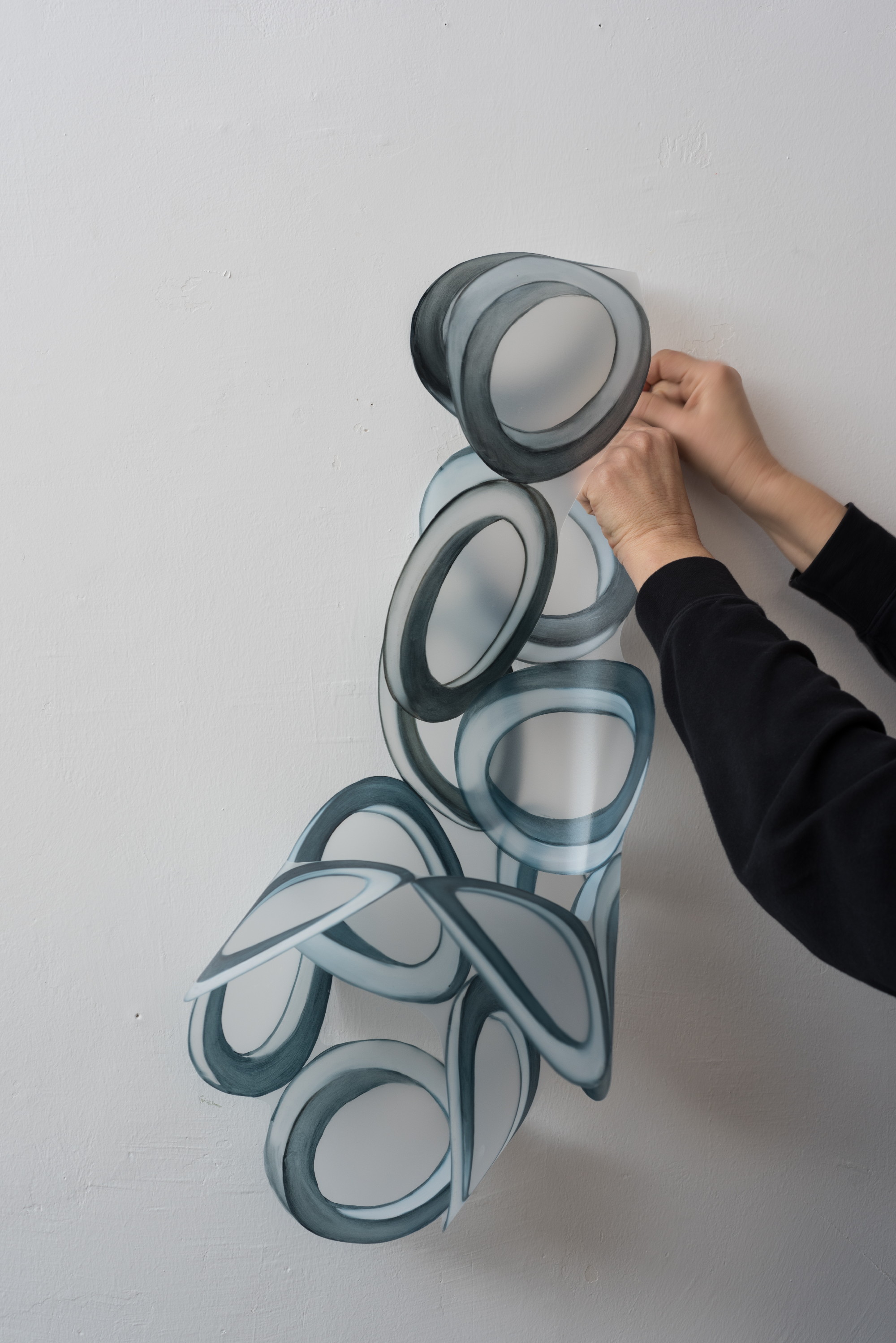
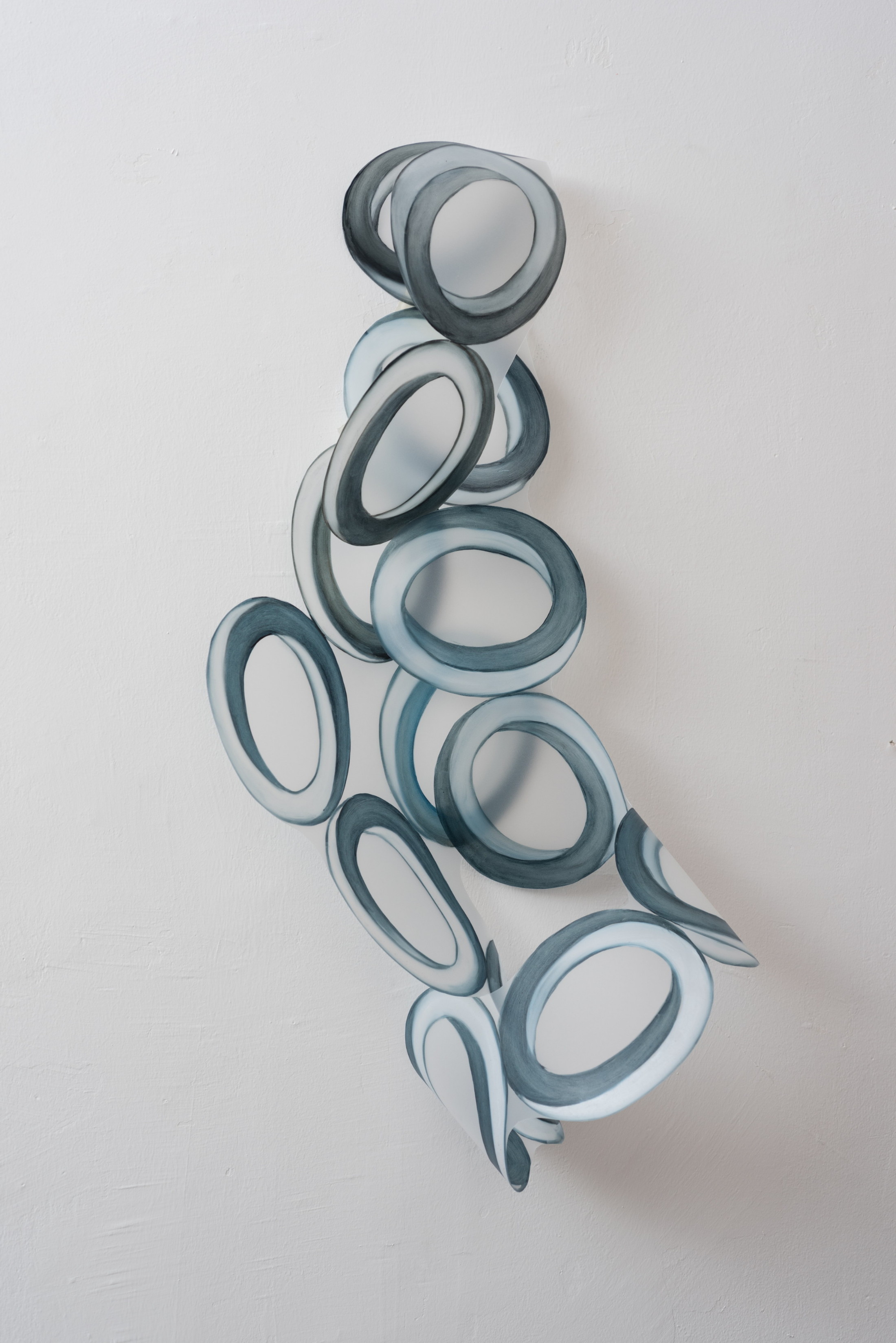



Between Synapses - Where Art and Brain Sciences Intersect
Ayelet Carmi
Looking into blindness, 2015-16, Oil on Mylar sheets
What does a blind child see when opening his eyes for the first time? What kind of a world is revealed, and how is it decoded? Dr. Ayelet McKyton’s research describes vision as a process that takes place not through the eyes, but through the brain. Dr. McKyton studies the perception of vision among blind children who underwent cataract removal surgery. When the children began to see, they succeeded in understanding two-dimensional figures and colors, but were unable to decode three-dimensional forms. Ayelet Carmi seeks to point out the tension between seeing and decoding what one sees. Carmi paints colorful two-dimensional images on transparent sheets of Mylar to make up three-dimensional forms, similar to the way an untrained brain reads the three-dimensional world. The brain, states the scientist, must carry out numerous stages of decoding in order to be able to understand and operate in the seen world, but this decoding is not self-evident for everyone.
In collaboration with Dr. Ayelet McKyton, research laboratory of Prof. Ehud Zohary
בין־סינפסות דיאלוג במרחבי מדעי המוח והאמנות
אוצרת: מיכל מור
אילת כרמי עצב הראיה, 2015-16, שמן על גיליונות מיילר
מה רואה ילד עיוור הפוקח את עיניו לראשונה? מהו העולם הנגלה בפניו, וכיצד הוא מפענח אותו? מחקרה של ד"ר אילת מקייטון מציג את הראייה כתהליך שאינו מתבצע דרך העיניים, אלא דרך המוח. היא בודקת את תפיסת הראייה אצל ילדים עיוורים שעברו ניתוח להסרת קטרקט והחלו לראות. ילדים אלו מצליחים להבין צורות דו-ממדיות וצבעים, אך אינם מצליחים לפענח צורות תלת-ממדיות. אילת כרמי מבקשת להצביע על המתח שבין ראיית האובייקט לפענוחו. על גבי ניירות שקופים היא מייצרת שכבות של דימויים צבעוניים דו-ממדיים, המרכיבים צורות תלת-ממדיות, כפי שמוח בלתי-מיומן קורא את עולם התלת-ממד. המוח, אומרת החוקרת, נדרש לבצע שלבי פענוח רבים כדי להבין ולפעול בעולם הראייתי, ולא בעבור כולם הפענוח הזה מובן מאליו.
בשיתוף ד"ר אילת מקייטון – מעבדת פרופ' אהוד זהרי

